Europe Textile Market Size
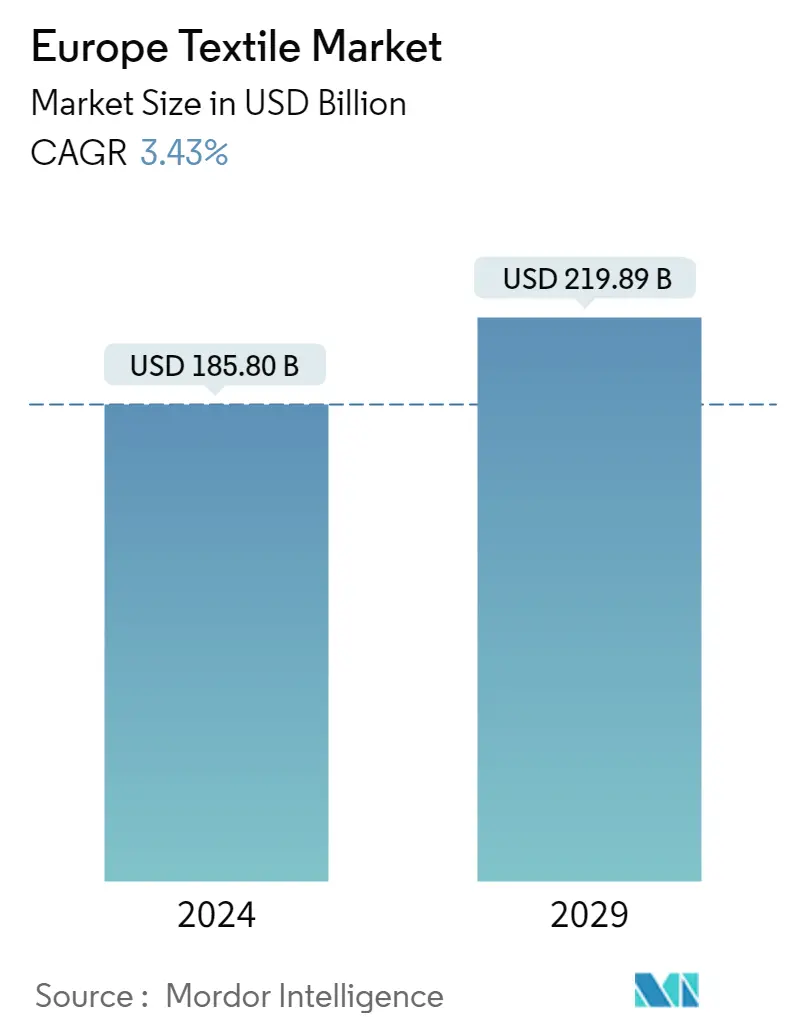
| Study Period | 2020 - 2029 |
| Base Year For Estimation | 2023 |
| Market Size (2024) | USD 185.80 Billion |
| Market Size (2029) | USD 219.89 Billion |
| CAGR (2024 - 2029) | 3.43 % |
| Market Concentration | Medium |
Major Players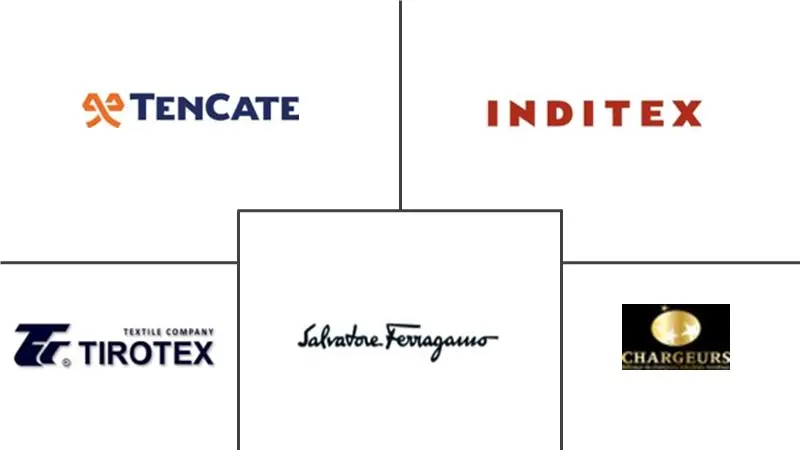
*Disclaimer: Major Players sorted in no particular order |
Europe Textile Market Analysis
The Europe Textile Market size is estimated at USD 185.80 billion in 2024, and is expected to reach USD 219.89 billion by 2029, growing at a CAGR of 3.43% during the forecast period (2024-2029).
In Europe, the textile industry significantly contributes to the economy, employing nearly 6% of the working class in total manufacturing. After COVID-19, there was an inclination toward the latest fashion trends among the young generation. Changing collections every three weeks has induced consumers to act with new behavior.
Digital platforms and digital marketing strategies are becoming prevalent in the European fashion market, and many new brands have emerged with the development of e-commerce, which allows companies to engage consumers through virtual reality. The fashion and online apparel industry is the one that marks the most significant growth in e-commerce sales. Therefore, the advent of online platforms has increased consumer spending on clothing through these channels, driving sales and revenue in the European textile market.
Europe Textile Market Trends
Rise in the Demand for Organic Textiles and Fabrics
Organic clothing is available in cotton, jute, silk, kapok, hemp, or wool. The demand for organic clothing is rising as more and more consumers become concerned about the environment. The European Textile sector is especially proactive in undertaking research work to develop new and innovative products. Given the health and environmental benefits of organic products, more eco-conscious consumers are now shifting towards clothing made from organic textiles. In response to consumer demand and pressure to green its operations, the fashion industry is taking new strides towards using more sustainable fabrics. Fast fashion giants are also leaping organic and recycled alternatives. H&M, for instance, has already increased its use of organic and recycled cotton to 95%.
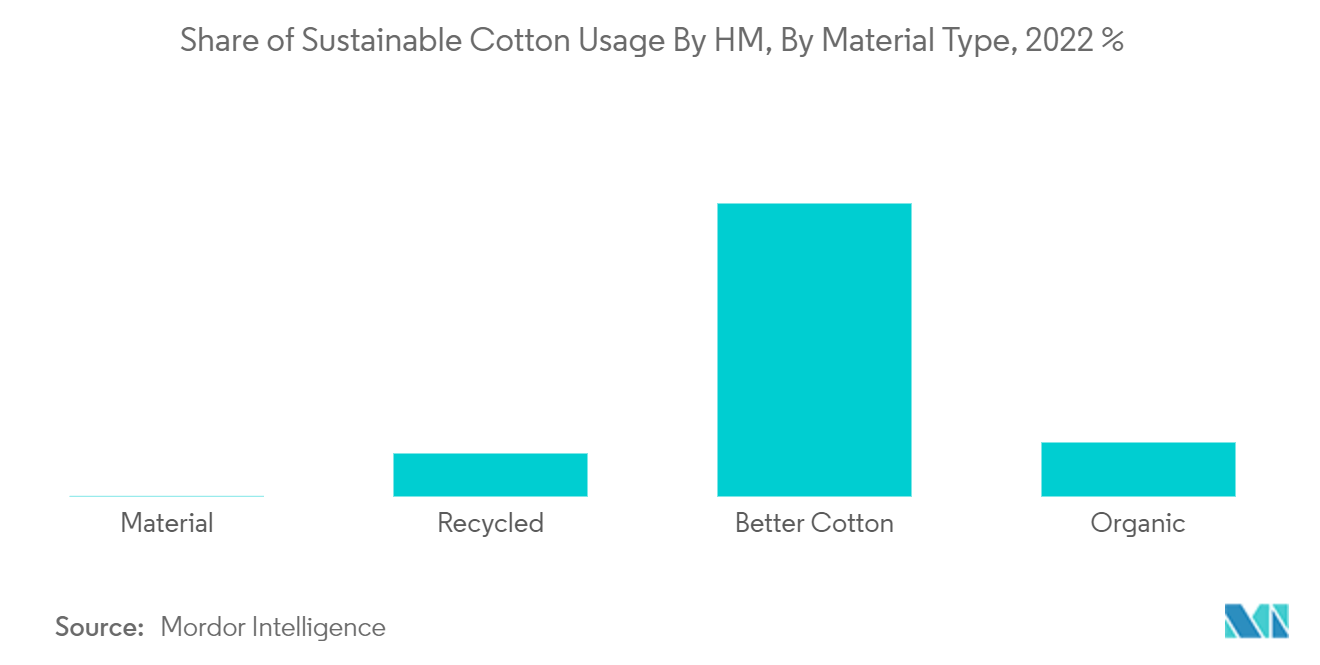
Rising Changes in Consumer's Shopping Behavior
The growth in disposable income and the increasing preference for online shopping will drive the European textile market for the next few years. Online shopping is still growing in importance, although take-up varies significantly by region and country. About 5 % of European household expenditure is spent on clothing and footwear, of which about 80 % is spent on clothes and 20 % on footwear. Furthermore, increasing disposable has led to a rise in supermarkets and retail stores, thereby driving the overall market growth. The demand is very high for premium and branded products due to increasing per capita disposable income. Rising disposable income, along with investments in textile manufacturing, would create lucrative growth prospects for the Textile market across the region.
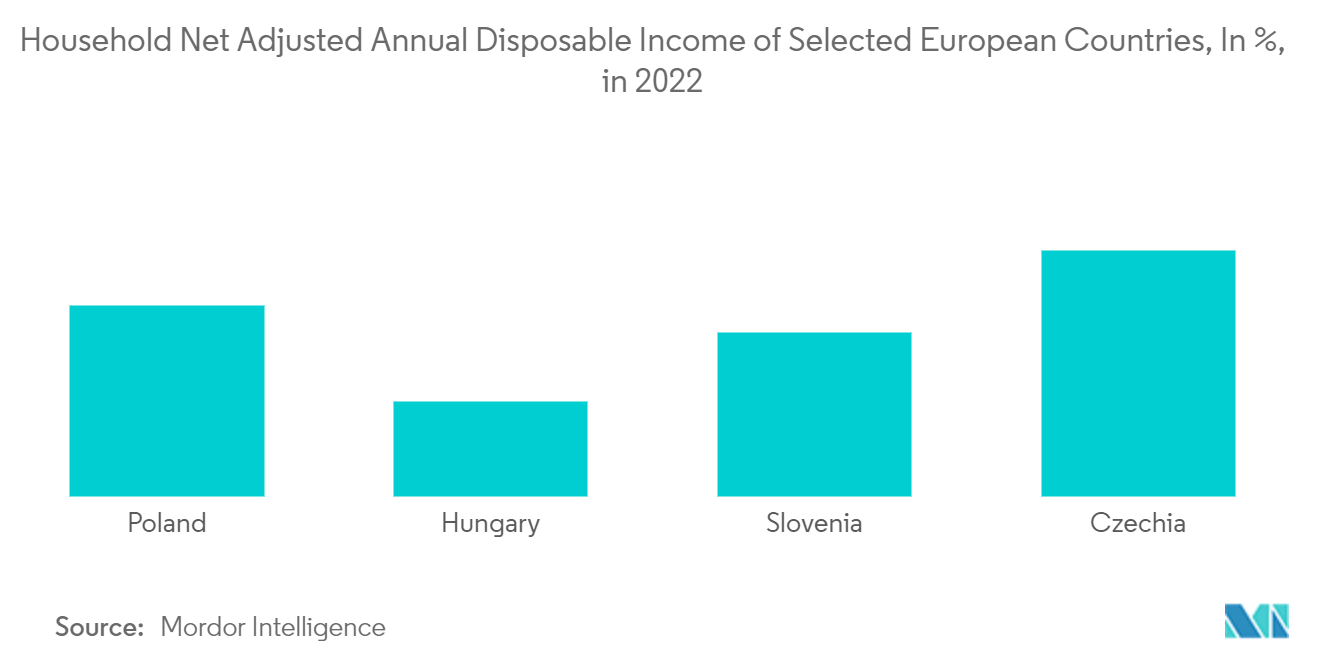
Europe Textile Industry Overview
Europe is home to hundreds of leading retailers and brands, internationally acclaimed designers, thousands of talented emerging designers, and forward-thinking entrepreneurs, researchers, and educators. European high-quality textiles and premium fashion products are in growing demand, both in high-income countries such as the United, Switzerland, Japan, and Canada, but also in emerging countries such as China and Hong Kong, Russia, Turkey, and the Middle East. Technical textiles are an undisputed success story of the European industry. In terms of international trade, both exports and imports of technical textiles have grown continuously over the years. Major players in the textile industry of Europe are Salvatore Ferragamo SpA, Koninklijke Ten Cate NV, Inditex, Tirotex, and Chargeurs SA.
Europe Textile Market Leaders
-
Salvatore Ferragamo SpA
-
Koninklijke Ten Cate NV
-
Inditex
-
Tirotex
-
Chargeurs SA
*Disclaimer: Major Players sorted in no particular order
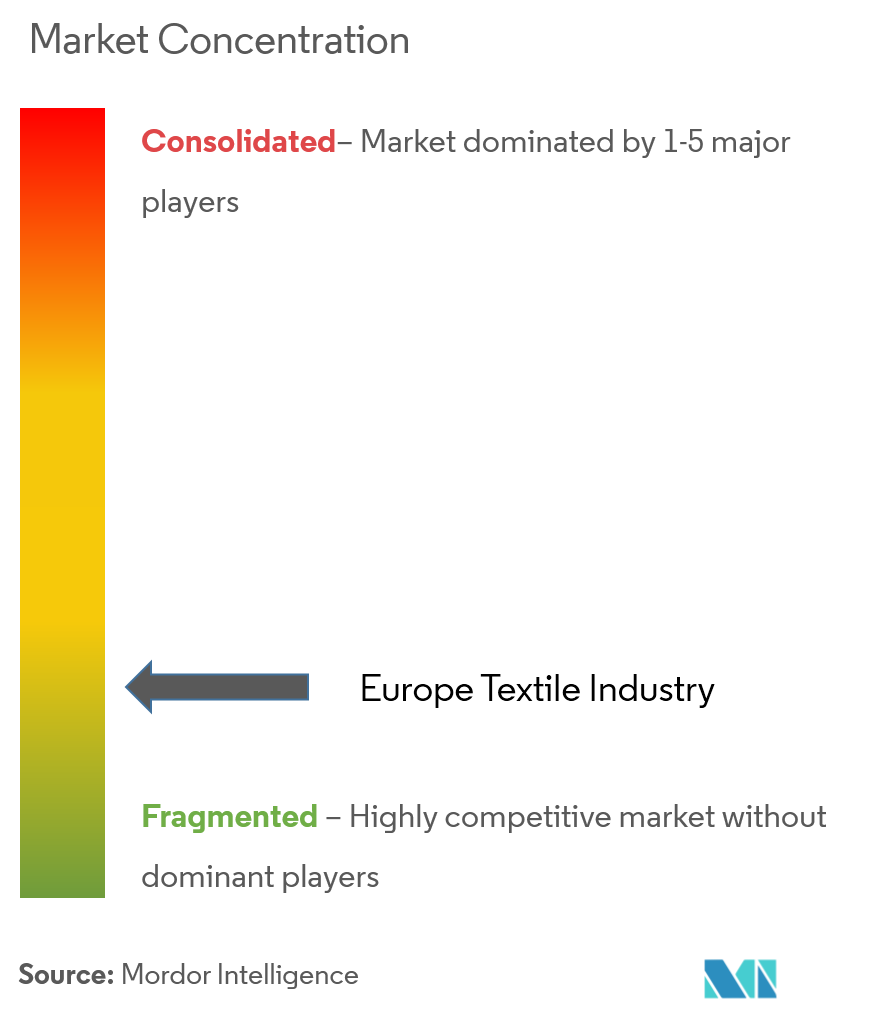
Europe Textile Market News
- December 2022: TextileGenesis™, a pioneering traceability platform custom-built for the textile ecosystem, was acquired by Lectra. Lectra is a company that offers consultancy and professional services to companies in many different sectors. This provides its customers with a vast collection of fashion.
- August 2022: Archroma to acquire the Textile Effects business of Huntsman. Both Archroma and Textile Effects are founding members of Sustainable Chemistry for the Textile Industry (SCTI), an alliance of leading chemical companies that strives to empower the textile and leather industries to apply sustainable, state-of-the-art chemistry solutions.
Europe Textile Market Report - Table of Contents
1. INTRODUCTION
- 1.1 Study Assumptions and Market Definition
- 1.2 Scope of the Study
2. RESEARCH METHODOLOGY
3. EXECUTIVE SUMMARY
4. MARKET INSIGHTS AND DYNAMICS
- 4.1 Market Overview
-
4.2 Market Drivers
- 4.2.1 Growing Awareness of the Latest Fashion Trends Among the Young Generation
-
4.3 Market Restraints
- 4.3.1 High Wastage
- 4.3.2 Market Opportunities
- 4.3.2.1 Increasing Trend of Smart Textiles
- 4.4 Value Chain / Supply Chain Analysis
-
4.5 Porter's Five Forces Analysis
- 4.5.1 Bargaining Power of Suppliers
- 4.5.2 Bargaining Power of Buyers/Consumers
- 4.5.3 Threat of New Entrants
- 4.5.4 Threat of Substitute Products
- 4.5.5 Intensity of Competitive Rivalry
- 4.6 Impact of COVID-19 on the Market
- 4.7 Insights on Latest Technologies Used in the Industry
5. MARKET SEGMENTATION
-
5.1 Application
- 5.1.1 Clothing
- 5.1.2 Industrial/Technical Applications
- 5.1.3 Household Applications
-
5.2 Material Type
- 5.2.1 Cotton
- 5.2.2 Jute
- 5.2.3 Silk
- 5.2.4 Synthetics
- 5.2.5 Wool
-
5.3 Process
- 5.3.1 Woven
- 5.3.2 Non-woven
6. COMPETITIVE LANDSCAPE
- 6.1 Market Concentration Overview
-
6.2 Company Profiles
- 6.2.1 Salvatore Ferragamo SpA
- 6.2.2 Koninklijke Ten Cate NV
- 6.2.3 Inditex
- 6.2.4 Tirotex
- 6.2.5 Chargeurs SA
- 6.2.6 Zorlu Holding
- 6.2.7 Miroglio Spa
- 6.2.8 Aquafilslo S.p.a.
- 6.2.9 Getzner Textil Aktiengesellschaft
- 6.2.10 Fulgar SpA*
- *List Not Exhaustive
7. MARKET FUTURE TRENDS
8. DISCLAIMER
** Subject To AvailablityEurope Textile Industry Segmentation
The textile industry is the platform or industry in which the development, production, processing, manufacture, and distribution of textile and fabric materials occur. The textile market industry is concerned with the design, production, and distribution of yarn, cloth, clothing, and garments. The raw material may be natural or synthetic, which may be using products of the chemical industry. The European textile market is segmented by application type (clothing, industrial/technical applications, and household applications), material type (cotton, jute, silk, synthetics, and wool), and process type (woven and non-woven). The report offers Market Size and forecasts for the Europe Textile Market in value (USD) for all the above segments.
| Application | Clothing |
| Industrial/Technical Applications | |
| Household Applications | |
| Material Type | Cotton |
| Jute | |
| Silk | |
| Synthetics | |
| Wool | |
| Process | Woven |
| Non-woven |
Europe Textile Market Research Faqs
How big is the Europe Textile Market?
The Europe Textile Market size is expected to reach USD 185.80 billion in 2024 and grow at a CAGR of 3.43% to reach USD 219.89 billion by 2029.
What is the current Europe Textile Market size?
In 2024, the Europe Textile Market size is expected to reach USD 185.80 billion.
Who are the key players in Europe Textile Market?
Salvatore Ferragamo SpA, Koninklijke Ten Cate NV, Inditex, Tirotex and Chargeurs SA are the major companies operating in the Europe Textile Market.
What years does this Europe Textile Market cover, and what was the market size in 2023?
In 2023, the Europe Textile Market size was estimated at USD 179.64 billion. The report covers the Europe Textile Market historical market size for years: 2020, 2021, 2022 and 2023. The report also forecasts the Europe Textile Market size for years: 2024, 2025, 2026, 2027, 2028 and 2029.
What are the opportunities for the European Luxury Textile Market?
The opportunities for the European Luxury Textile Market are a) Brand recognition b) Potential for customization
What are the challenges faced by the European Textile Industry from fast fashion?
The challenges faced by the European Textile Industry from fast fashion are a) Short production cycles b) Waste generation c) Potential for ethical sourcing concerns
Europe Textile Industry Report
The European textile industry is undergoing significant transformations driven by the adoption of advanced technology, sustainable material sourcing, and increasing demand for smart and technical textiles. Key nations like Italy, Germany, and France are leading these technological advancements in both luxury and industrial textiles sectors. The preference for natural fibers, such as cotton and wool, highlights the industry's support for the EU's circular economy goals through eco-friendly and biodegradable materials. The diverse use of materials spans household to fashion applications, reflecting the sector's broad market segmentation. As the textile industry in Europe continues to expand and innovate, there is a significant focus on ethical production practices, ensuring superior quality and sustainability. This offers great opportunities for both established textile companies in Europe and newcomers aiming to tap into the growing European market. Access detailed market forecasts and analyses to understand the trends shaping the Europe textile industry. Get a sample of this industry analysis as a free report PDF download.



